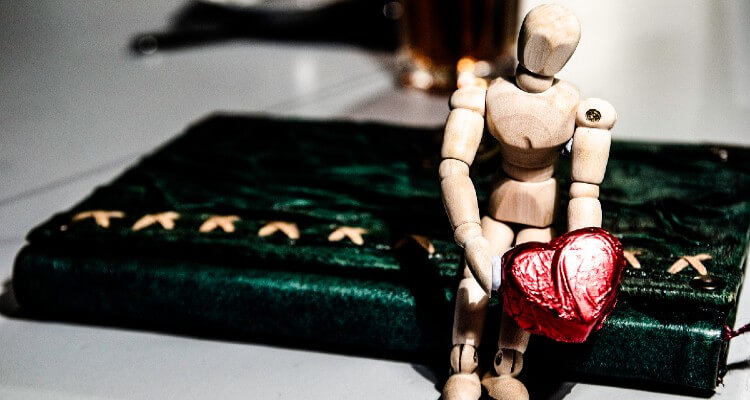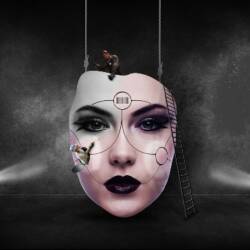How Ancient Beliefs Explain Our Emotional Connections To Sextech
There’s nothing new about perceiving life in the lifeless.

Right along with the ever-increasing proliferation of artificial companions, it’s not unexpected that a few eyebrows have furrowed. Specifically, bewilderment often arises over why and how they can be more than a mere assemblage of plastic, metal, electronics, and software to their owners.
Contemporary society often gets the blame, with fingers pointed at everything from the erotization of technology to a growing inability to form meaningful human relationships.
But there’s another viewpoint, one raising the point that humanity’s no stranger to believing that everything around us, natural or artificial, is in its own way alive.
The needs of a social species

While we may not thunder across the landscape like a mighty herd, we homo sapiens remain—coded in big, bold letters in our DNA—tribal animals.
Back when we had tails, this was a pretty solid survival mechanism: safety in numbers and all that. Though our predators are long gone, we still have that innate hunger to bond.
Add to this that for thousands and thousands of years, our perceptions were limited to viewing the world as organic: the sun and moon not distantly massive objects but manifestations of a vastly powerful entity. Instead of spears and clubs breaking due to wear and tear, it was a living something in the stone and wood misbehavin.
Simplistic, of course. But where this is going is animism: the idea that everything around us is, to some degree, a living thing.
But before you turn your 21st-century nose up at what is arguably the oldest spiritual belief on the planet, we’re beginning to hear that animism can be an emotionally practical viewpoint to have—and possibly offer sextech a new direction to move in.
The wishes of an ant

It’s not like animism never really left us.
Just look to Shinto, Japan’s indigenous religion that holds that kami, a kind of spirit of divine power, inhabits every aspect of the world for a perfect example.
As one of their teachings puts it: “Even the wishes of an ant reach to heaven.”
Shinto’s certainly no stranger to us at Future of Sex.
Most recently in our article on Patrick W. Galbraith’s research into “Otaku” culture on how fictional characters can be considered to have their own form of existence, and also in how a Japanese love doll manufacturer is offering funeral rights to their customers, to help them usher their artificial beloveds into the afterlife.
In a recent article, Columbia College Chicago professor of philosophy, Stephen Asma, argues that animistic beliefs like Shinto can aid in dealing with what feels all-too too frequently like a mercurial and unjust world.
It makes more sense to say that a spiteful spirit is bringing one misery, or that a benevolent ghost is granting favor, than to say that seamless neutral and predictable laws of nature are unfolding according to some invisible logic.
This kind of perception has a few extra benefits as well. Boosting empathy toward our fellow humans, to start, since we’re all part of a global living ecosystem.
Then there’s the environmental benefit, as it becomes ethically challenging to dig up, cut down, pave over, or chow down on what we previously considered inanimate or unfeeling.
Sextech and animism

Which leads us to our favorite topic. Accepting that animism plays a role in developing an emotional attachment to sexdolls and the like—and not forgetting personal virtual assistants like Siri and Alexa—how could this change the industry’s approach to their products?
For one thing, it’d be interesting to see developers actively integrating a form of animism into their product designs and subsequent marketing. Japan, naturally, has beaten us to it: selling sexdolls and virtual girlfriends not as cold, hard items but as a new kind of person to have a relationship with.
Not that other countries haven’t made similar steps. Abyss Creations, the makers of ultra-sophisticated RealDolls, continue to refine their Harmony artificial intelligence system, and their digital girlfriend software, to be as lifelike as possible.
So why not go further with this?
It’s not hard to picture products coming with a fascinating backstory, their current sexual likes and dislikes, to form a uniquely colorful personality. It might look kind of like how dolls and action figures used to be marketed, so out of the box they felt more like a playmate and less like a just a run-of-the-mill plastic object.
The successful Kickstarter campaign for the endearing Cute Little F*ckers shows there’s an interest in this approach, as each inclusively-designed toy is described as a character:
Hi, I’m Pricette Puppypus! My pronouns are they/them, or sometimes the Royal We. I am a playful vibrator that fits into all sorts of spaces.
Better still, why not add a dash of alternate reality gaming to sextech development?
For those unfamiliar with the term, ARGs commonly sprawl across a range of media—like the Internet, texting, physical documents and real-world locations, etc.—to immerse players in a new world.
So for our animist-accepting tech, let’s do the same: sexdolls and other products enhancing their life-likeness by inviting us to join them in their own interconnected and fully-realized story?
Fun? More than likely. But there’s something else to consider in our discussion of animism and sextech: that by openly accepting it, and then helping users develop these kinds of emotional connections, developers could help us all become better people.
All of us, together

Humans don’t do well in isolation. We need companionship just as much as we need air, water, and food to survive.
Then along came the pandemic, and the importance of social isolation, and with it skin hunger, the craving for any kind of physical contact with another person that is rapidly becoming a global mental health issue. Right along with it the debilitating anxiety and stress over such widespread and paralyzing uncertainty.
Though it may not be the solution, working with and not against our deeply-rooted animism might help. Personifying sexdolls, making it easier to see them as a dear friend or a caring lover could make these dark nights a little less lonely.
Then along with believing a made-thing can somehow be alive, we might profoundly shift our perceptions from a world of everything towards it as everyone: fundamentally understand that we’re all in this together—and deserving of happiness.
Image sources: A. David Holloway, James Loesch, Kate Nevens, The Local People Photo Archive, A. David Holloway

















